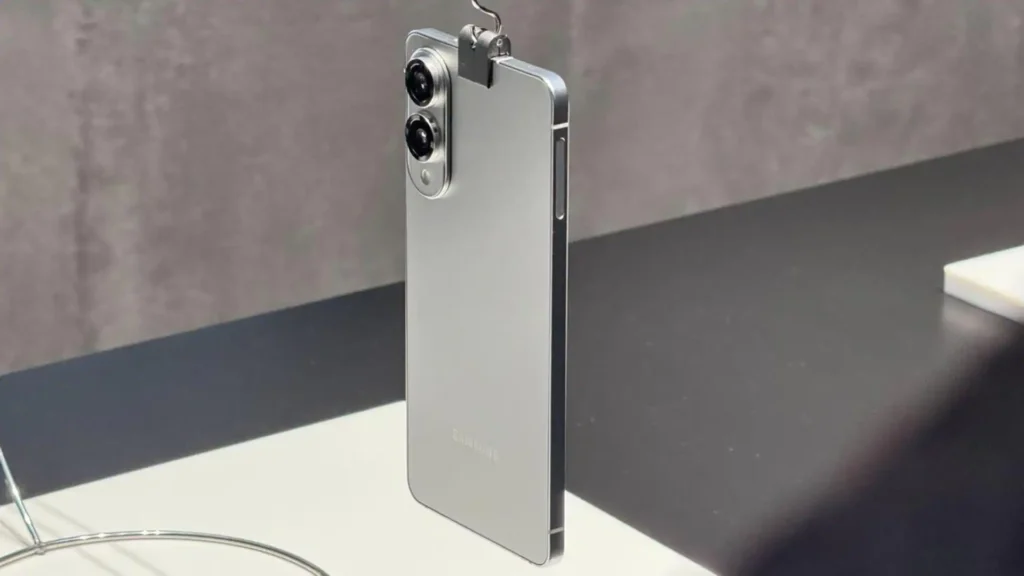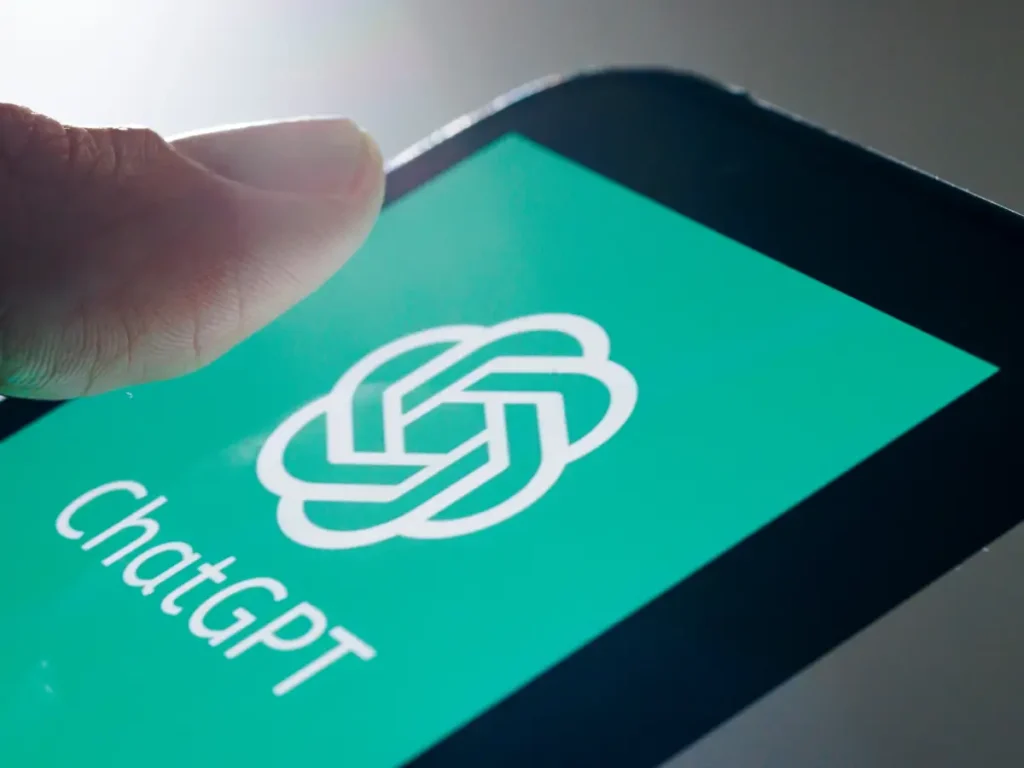Tech
Getty CEO Slams AI Copyright Infringement as “Unfair Competition,” Cites Millions Spent Battling Stability AI
As the Stability AI case heads to trial, Getty Images warns it’s too costly to fight every copyright breach in today’s AI landscape.

Getty Images is sounding the alarm on the escalating war between creators and artificial intelligence firms, revealing the staggering costs of defending copyright in the age of AI. In a fiery statement to CNBC, CEO Craig Peters said the media giant has spent “millions and millions of dollars” battling Stability AI — and admitted it’s simply too expensive to pursue every infringement in court.
At the heart of the legal showdown is Getty’s claim that Stability AI illegally scraped more than 12 million copyrighted images to train its popular text-to-image model, Stable Diffusion. Getty alleges the AI company used those images without permission or compensation, effectively weaponizing the creative works of photographers for its own commercial gain. “That’s theft, not innovation,” said Peters. “It’s unfair competition.”
Peters argues that this case is just one symptom of a broader problem — what he calls a “world of rhetoric” from AI firms that claim paying artists would “kill innovation.” Getty’s case against Stability AI, currently filed in both the U.K. and the U.S., seeks to challenge that narrative and reassert the value of intellectual property in the AI era.
Stability AI, for its part, maintains it did nothing wrong. The company contends that training AI on publicly available images falls under the legal doctrine of “fair use,” a defense that remains legally untested at this scale. Yet Peters isn’t buying it. He contends that companies are “scraping copyrighted material to build billion-dollar models and then turning around and selling those services into commercial markets.”
The legal battle has become a rallying point for creators, especially after recent remarks by former Meta executive Nick Clegg drew widespread online backlash. Clegg suggested that requiring artist consent would hinder progress — a view Getty and its supporters vehemently reject. As one critic put it on social media: “That’s like Blackbeard arguing that piracy would die if he had to ask for permission.”
While Getty continues to push for artist protections in the courtroom, Peters admits that even a well-funded company like his cannot keep pace with the volume of potential lawsuits. “We can’t pursue all the infringements that happen in one week,” he noted. The case against Stability AI alone has required extensive due diligence and legal maneuvering to determine where training occurred — adding complexity and cost.
Yet Getty is not retreating. The company has submitted proposals to the Trump administration, urging that its AI Action Plan preserve strong copyright protections. Getty rejects the notion of a “right to learn” exemption for AI companies, warning it would strip creators of their rights while enriching data-hungry tech giants.
Peters’ message is clear: the fight for creator rights is far from over, but it won’t be won in courtrooms alone. “This isn’t about protecting ourselves from innovation. It’s about building a sustainable path forward — one where the rights of artists are not sacrificed at the altar of technological disruption.”
With an initial trial to determine liability scheduled for June 9, the Getty-Stability AI case could set precedent for how the legal system treats data scraping and fair use in the age of generative AI.
Tech
iPhone 17 vs Samsung Galaxy S25 Edge Which Flagship Will Rule 2025
With Apple betting on sleek design and faster charging and Samsung pushing AI and display power, here’s how these two titans stack up.

The iPhone 17 and Samsung Galaxy S25 Edge are shaping up to be the most talked-about smartphone flagships of 2025, and for good reason. Apple and Samsung continue to push the boundaries of innovation, but their approaches this year couldn’t be more different. Whether you’re loyal to iOS or tempted by Android, this face-off offers everything from design elegance to raw AI performance—and deciding between them might not be easy.
Let’s start with design. The iPhone 17, particularly the Air variant, is expected to debut an ultra-slim, lightweight chassis, potentially the thinnest iPhone yet. Meanwhile, the Galaxy S25 Edge is going bolder with a refined curved-edge display and a more futuristic form factor, featuring reduced bezels and a titanium-glass composite body. If you’re into sleek minimalism, Apple takes the edge. If you’re into visual impact and ergonomics, Samsung holds strong.
In terms of display technology, iPhone 17 vs Samsung Galaxy S25 Edge Which Flagship Will Rule 2025keeps its lead. The S25 Edge is rumored to feature a 6.9-inch QHD+ AMOLED panel with a 144Hz refresh rate, AI-adaptive brightness, and next-gen Eye Comfort Shield. Apple’s iPhone 17 will stick with its signature Super Retina XDR OLED display, but it’s rumored to finally adopt LTPO tech across the lineup, enabling smoother refresh rates and better battery efficiency.

When it comes to performance, the Galaxy S25 Edge will be powered by the Snapdragon 8 Gen 4 globally—a chip packed with enhanced AI capabilities and real-time language translation features. Apple, on the other hand, is expected to equip the iPhone 17 Air with the A18 chip, a slightly upgraded version of the A17 Pro, and reserve the A19 chip for the Pro models. While Apple will still offer buttery-smooth performance and deep integration with iOS, Samsung’s edge in AI-driven multitasking and productivity tools could be a deciding factor for power users.
Camera systems remain a close fight. The S25 Edge is rumored to feature a 200MP main sensor with improved night mode and 8K recording, while the iPhone 17 may retain a 48MP primary lens with computational enhancements. Apple continues to lead in color accuracy and natural processing, whereas Samsung wins with detail and optical versatility.

Where Apple may catch Samsung off guard is in charging speeds. Thanks to the rumored Qi 2.2-enabled MagSafe chargers, the iPhone 17 could support up to 50W wireless charging, rivaling or even surpassing Samsung’s current 45W wired charging. If true, Apple’s decision to boost wireless and USB-C speeds could eliminate one of the last advantages Android had over iPhones.
Both phones will come with flagship pricing, but Samsung is expected to offer more RAM and storage options even at the base level. Apple’s tightly controlled hardware-to-software ecosystem will continue to appeal to long-time iOS users, while Samsung’s flexibility, customizations, and AI-driven experience make it irresistible for Android fans.
Apple
iPhone 17 Air Could Charge at Blazing Fast Speeds with 50W Wireless Upgrade
Leaked MagSafe chargers hint at Apple’s biggest wireless charging boost ever, thanks to the new Qi 2.2 standard.

Apple’s iPhone 17 lineup is shaping up to bring one of the most exciting upgrades in recent memory—not through flashy design changes, but through blazing fast wireless charging. According to recent leaks from 91mobiles and regulatory filings in Taiwan, Apple could be ready to roll out 50W wireless charging support via its next-gen MagSafe chargers powered by the Qi 2.2 standard.
That’s right—while the ultra-slim iPhone 17 Air is expected to have a thinner battery (which usually means more frequent charging), Apple seems to be solving that problem in the most Apple way possible: by dramatically speeding up MagSafe charging.
The leaks point to two upcoming MagSafe models, reportedly labeled A3502 and A3503, submitted to Taiwan’s NCC regulatory body. Though the puck-style design remains familiar, these chargers will reportedly be capable of delivering up to 45W of wireless power, a giant leap from the 15W limit on current Qi 2.0 devices, and even beyond the 30W ceiling seen in the iPhone 16 series.
The real game-changer here is the Qi 2.2 standard, which promises not just higher wattage, but also improved efficiency, better magnetic alignment, and enhanced backward compatibility. That means faster charging for newer models like the iPhone 17 Air, without sacrificing support for older MagSafe-compatible devices.
Now, will Apple actually allow the full 50W wireless experience? That remains to be seen. The Cupertino giant has a history of keeping power under tight control, often capping performance to maintain battery health. Still, if the iPhone 17 Air even hits 40W–45W wirelessly, it would bring Apple neck-and-neck with Android flagships that have long dominated the fast-charging space.
Even more exciting, if Apple boosts wireless speeds, it’s likely we’ll see a similar USB-C charging bump—a huge win for power users and those constantly on the go.
All signs point to Apple saving this MagSafe surprise for the official iPhone 17 reveal later this year, possibly alongside other hardware announcements. If true, the iPhone 17 Air could become the most convenient iPhone ever for battery-conscious users, combining sleek portability with charging speeds once thought impossible on an Apple device.
AI
Top 5 Mind Blowing Features of ChatGPT You’re Probably Not Using Yet
From writing your code to remembering your favorite coffee order, ChatGPT’s latest features are redefining what it means to have an AI assistant.

In the ever-evolving world of AI, ChatGPT by OpenAI remains one of the most powerful and accessible tools available to users across the globe. But beyond just answering questions or writing essays, ChatGPT is now packed with features that many users haven’t even discovered yet. Whether you’re a student, entrepreneur, coder, or content creator, these top 5 features of ChatGPT in 2025 are total game changers.

1. Memory That Remembers You
One of the most revolutionary updates to ChatGPT is its Memory feature—available to ChatGPT Plus users. This allows the AI to remember facts about you, your preferences, and past conversations. Whether it’s your writing tone, favorite tools, or the fact that you hate semicolons in your code, ChatGPT tailors responses to your style over time.
You can manage memory easily and even wipe it clean if you want a fresh start. Think of it as a personal AI that grows smarter the more you use it.
2. Advanced Data Analysis and File Uploads
ChatGPT now lets you upload documents, spreadsheets, and PDFs, and it can analyze data, extract insights, create summaries, and generate charts in seconds.
Whether you’re a student reviewing a research paper, a marketer analyzing campaign data, or a founder preparing reports, this feature makes handling complex files effortless.
3. Custom GPTs for Anything You Imagine
With the introduction of Custom GPTs, OpenAI now allows users to build their own version of ChatGPT—no coding required. You can fine-tune behavior, add custom instructions, or even integrate third-party APIs to make it act like a travel planner, writing coach, or coding mentor.
There’s also a public Explore GPTs store where users can browse community-created GPTs and use them instantly. This opens a world of possibilities where everyone can create their own AI assistant.

4. Deep Web Browsing Capability
Unlike older versions, ChatGPT Plus now comes equipped with web browsing capabilities. This means the AI can search the internet in real time, provide up-to-date information, and cite sources for its findings. It’s ideal for news, research, product comparisons, or anything that goes beyond its knowledge cut-off.
No more worrying about outdated info—ChatGPT is now as current as your browser tab.
5. Code Interpreter aka Python Sandbox (a.k.a. “Advanced Tools”)
ChatGPT’s built-in code interpreter—also known as Python sandbox or Advanced Data Analysis (ADA)—is a hidden gem. It can run calculations, generate plots, clean datasets, and even write complex functions live within your conversation.
It’s especially loved by data scientists and engineers, but even non-coders can use it to automate tasks or visualize data with just a simple prompt.

Final Thoughts
In 2025, ChatGPT is no longer just a chatbot—it’s a versatile AI platform designed to make your life smarter, faster, and more efficient. From personalized memory and coding tools to web browsing and custom AI assistants, these features are only scratching the surface of what’s possible.
Whether you’re using ChatGPT for work, study, or just curiosity, these five features will help you unlock its full potential—and maybe even replace a few apps on your device along the way.
-

 Personality6 days ago
Personality6 days agoDonald Trump’s net worth reveals the fortune behind the former US President and business mogul
-

 Entertainment7 days ago
Entertainment7 days agoTop 5 Oscar Moments That Shook Hollywood and the World
-

 Entertainment5 days ago
Entertainment5 days agoJonathan Joss Shot Dead at 59 in Texas Tragedy His Husband Says Was Hate-Fueled Crime
-

 Tech1 week ago
Tech1 week agoTop 7 AI Tools Every Corporate Employee Should Use in 2025.
-

 Films5 days ago
Films5 days agoRobert Pattinson’s Top 5 Films That Showcase His Evolution from Teen Idol to Indie Icon
-

 Personality5 days ago
Personality5 days agoLionel Messi’s Net Worth Revealed and How the Football Legend Built His Multi-Million Dollar Fortune
-

 Films6 days ago
Films6 days agoJames Gunn’s Net Worth Revealed How the Filmmaker Built His Fortune
-

 Baseball MLB4 days ago
Baseball MLB4 days agoJac Caglianone Goes Hitless in Debut but Sparks Royals Comeback in Unforgettable MLB Opener
























